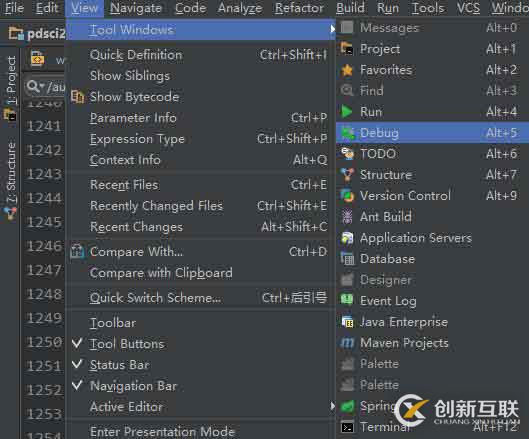使用JupyterNotebook學習Python的方法-創新互聯
這篇文章主要介紹了使用Jupyter Notebook學習Python的方法,具有一定借鑒價值,需要的朋友可以參考下。希望大家閱讀完這篇文章后大有收獲。下面讓小編帶著大家一起了解一下。

有了 Jupyter、PyHamcrest,用一點測試的代碼把它們連在一起,你就可以教任何適用于單元測試的 Python 內容。

關于 Ruby 社區的一些事情一直讓我印象深刻,其中兩個例子是對測試的承諾和對易于上手的強調。這兩方面最好的例子是 Ruby Koans,在這里你可以通過修復測試來學習 Ruby。
要是我們能把這些神奇的工具也用于 Python,我們應該可以做得更好。是的,使用 Jupyter Notebook、PyHamcrest,再加上一點類似于膠帶的粘合代碼,我們可以做出一個包括教學、可工作的代碼和需要修復的代碼的教程。
首先,需要一些“膠布”。通常,你會使用一些漂亮的命令行測試器來做測試,比如 pytest 或 virtue。通常,你甚至不會直接運行它。你使用像 tox 或 nox 這樣的工具來運行它。然而,對于 Jupyter 來說,你需要寫一小段粘合代碼,可以直接在其中運行測試。
幸運的是,這個代碼又短又簡單:
import unittest
def run_test(klass):
suite = unittest.TestLoader().loadTestsFromTestCase(klass)
unittest.TextTestRunner(verbosity=2).run(suite)
return klass復制代碼現在,裝備已經就緒,可以進行第一次練習了。
在教學中,從一個簡單的練習開始,建立信心總是一個好主意。
那么,讓我們來修復一個非常簡單的測試:
@run_test
class TestNumbers(unittest.TestCase):
def test_equality(self):
expected_value = 3 # 只改這一行
self.assertEqual(1+1, expected_value)復制代碼 test_equality (__main__.TestNumbers) ... FAIL
======================================================================
FAIL: test_equality (__main__.TestNumbers)
----------------------------------------------------------------------
Traceback (most recent call last):
File "<ipython-input-7-5ebe25bc00f3>", line 6, in test_equality
self.assertEqual(1+1, expected_value)
AssertionError: 2 != 3
----------------------------------------------------------------------
Ran 1 test in 0.002s
FAILED (failures=1)復制代碼“只改這一行” 對學生來說是一個有用的標記。它準確地表明了需要修改的內容。否則,學生可以通過將第一行改為 return 來修復測試。
在這種情況下,修復很容易:
@run_test
class TestNumbers(unittest.TestCase):
def test_equality(self):
expected_value = 2 # 修復后的代碼行
self.assertEqual(1+1, expected_value)復制代碼 test_equality (__main__.TestNumbers) ... ok
----------------------------------------------------------------------
Ran 1 test in 0.002s
OK復制代碼然而,很快,unittest 庫的原生斷言將被證明是不夠的。在 pytest 中,通過重寫 assert 中的字節碼來解決這個問題,使其具有神奇的屬性和各種啟發式方法。但這在 Jupyter notebook 中就不容易實現了。是時候挖出一個好的斷言庫了:PyHamcrest。
from hamcrest import *
@run_test
class TestList(unittest.TestCase):
def test_equality(self):
things = [1,
5, # 只改這一行
3]
assert_that(things, has_items(1, 2, 3))復制代碼 test_equality (__main__.TestList) ... FAIL
======================================================================
FAIL: test_equality (__main__.TestList)
----------------------------------------------------------------------
Traceback (most recent call last):
File "<ipython-input-11-96c91225ee7d>", line 8, in test_equality
assert_that(things, has_items(1, 2, 3))
AssertionError:
Expected: (a sequence containing <1> and a sequence containing <2> and a sequence containing <3>)
but: a sequence containing <2> was <[1, 5, 3]>
----------------------------------------------------------------------
Ran 1 test in 0.004s
FAILED (failures=1)復制代碼PyHamcrest 不僅擅長靈活的斷言,它還擅長清晰的錯誤信息。正因為如此,問題就顯而易見了。[1, 5, 3] 不包含 2,而且看起來很丑:
@run_test
class TestList(unittest.TestCase):
def test_equality(self):
things = [1,
2, # 改完的行
3]
assert_that(things, has_items(1, 2, 3))復制代碼 test_equality (__main__.TestList) ... ok
----------------------------------------------------------------------
Ran 1 test in 0.001s
OK復制代碼使用 Jupyter、PyHamcrest 和一點測試的粘合代碼,你可以教授任何適用于單元測試的 Python 主題。
例如,下面可以幫助展示 Python 從字符串中去掉空白的不同方法之間的差異。
source_string = " hello world "
@run_test
class TestList(unittest.TestCase):
# 這是個贈品:它可以工作!
def test_complete_strip(self):
result = source_string.strip()
assert_that(result,
all_of(starts_with("hello"), ends_with("world")))
def test_start_strip(self):
result = source_string # 只改這一行
assert_that(result,
all_of(starts_with("hello"), ends_with("world ")))
def test_end_strip(self):
result = source_string # 只改這一行
assert_that(result,
all_of(starts_with(" hello"), ends_with("world")))復制代碼 test_complete_strip (__main__.TestList) ... ok
test_end_strip (__main__.TestList) ... FAIL
test_start_strip (__main__.TestList) ... FAIL
======================================================================
FAIL: test_end_strip (__main__.TestList)
----------------------------------------------------------------------
Traceback (most recent call last):
File "<ipython-input-16-3db7465bd5bf>", line 19, in test_end_strip
assert_that(result,
AssertionError:
Expected: (a string starting with ' hello' and a string ending with 'world')
but: a string ending with 'world' was ' hello world '
======================================================================
FAIL: test_start_strip (__main__.TestList)
----------------------------------------------------------------------
Traceback (most recent call last):
File "<ipython-input-16-3db7465bd5bf>", line 14, in test_start_strip
assert_that(result,
AssertionError:
Expected: (a string starting with 'hello' and a string ending with 'world ')
but: a string starting with 'hello' was ' hello world '
----------------------------------------------------------------------
Ran 3 tests in 0.006s
FAILED (failures=2)復制代碼理想情況下,學生們會意識到 .lstrip() 和 .rstrip() 這兩個方法可以滿足他們的需要。但如果他們不這樣做,而是試圖到處使用 .strip() 的話:
source_string = " hello world "
@run_test
class TestList(unittest.TestCase):
# 這是個贈品:它可以工作!
def test_complete_strip(self):
result = source_string.strip()
assert_that(result,
all_of(starts_with("hello"), ends_with("world")))
def test_start_strip(self):
result = source_string.strip() # 改完的行
assert_that(result,
all_of(starts_with("hello"), ends_with("world ")))
def test_end_strip(self):
result = source_string.strip() # 改完的行
assert_that(result,
all_of(starts_with(" hello"), ends_with("world")))復制代碼 test_complete_strip (__main__.TestList) ... ok
test_end_strip (__main__.TestList) ... FAIL
test_start_strip (__main__.TestList) ... FAIL
======================================================================
FAIL: test_end_strip (__main__.TestList)
----------------------------------------------------------------------
Traceback (most recent call last):
File "<ipython-input-17-6f9cfa1a997f>", line 19, in test_end_strip
assert_that(result,
AssertionError:
Expected: (a string starting with ' hello' and a string ending with 'world')
but: a string starting with ' hello' was 'hello world'
======================================================================
FAIL: test_start_strip (__main__.TestList)
----------------------------------------------------------------------
Traceback (most recent call last):
File "<ipython-input-17-6f9cfa1a997f>", line 14, in test_start_strip
assert_that(result,
AssertionError:
Expected: (a string starting with 'hello' and a string ending with 'world ')
but: a string ending with 'world ' was 'hello world'
----------------------------------------------------------------------
Ran 3 tests in 0.007s
FAILED (failures=2)復制代碼他們會得到一個不同的錯誤信息,顯示去除了過多的空白:
source_string = " hello world "
@run_test
class TestList(unittest.TestCase):
# 這是個贈品:它可以工作!
def test_complete_strip(self):
result = source_string.strip()
assert_that(result,
all_of(starts_with("hello"), ends_with("world")))
def test_start_strip(self):
result = source_string.lstrip() # Fixed this line
assert_that(result,
all_of(starts_with("hello"), ends_with("world ")))
def test_end_strip(self):
result = source_string.rstrip() # Fixed this line
assert_that(result,
all_of(starts_with(" hello"), ends_with("world")))復制代碼 test_complete_strip (__main__.TestList) ... ok
test_end_strip (__main__.TestList) ... ok
test_start_strip (__main__.TestList) ... ok
----------------------------------------------------------------------
Ran 3 tests in 0.005s
OK復制代碼感謝你能夠認真閱讀完這篇文章,希望小編分享使用Jupyter Notebook學習Python的方法內容對大家有幫助,同時也希望大家多多支持創新互聯,關注創新互聯-成都網站建設公司行業資訊頻道,遇到問題就找創新互聯,詳細的解決方法等著你來學習!
網站題目:使用JupyterNotebook學習Python的方法-創新互聯
URL地址:http://vcdvsql.cn/article38/ddhcpp.html
成都網站建設公司_創新互聯,為您提供做網站、網站排名、手機網站建設、網站內鏈、營銷型網站建設、網站建設
聲明:本網站發布的內容(圖片、視頻和文字)以用戶投稿、用戶轉載內容為主,如果涉及侵權請盡快告知,我們將會在第一時間刪除。文章觀點不代表本網站立場,如需處理請聯系客服。電話:028-86922220;郵箱:631063699@qq.com。內容未經允許不得轉載,或轉載時需注明來源: 創新互聯

- LED網站建設及LED行業網站改版方案 2020-11-01
- 網站改版前要注意哪些問題 網站改版后應該做好哪些操作? 2020-12-11
- 網站改版后需要注意哪些問題 2020-11-15
- 進行網站改版時需要考慮的問題 2021-11-18
- 集團網站改版方案. 2019-07-29
- 企業網站改版需要注意什么? 2023-04-13
- 網站改版會影響排名嗎 2014-12-29
- 上海嘉定網站改版多少錢? 2018-02-04
- 企業網站改版有哪些比較好的方法 2021-08-26
- 網站改版需要注意的細節以及怎樣才能更顯創意 2013-07-18
- 網站改版過程中需要注意什么 2021-10-03
- 我們進行網站改版需明確目標 2016-08-11